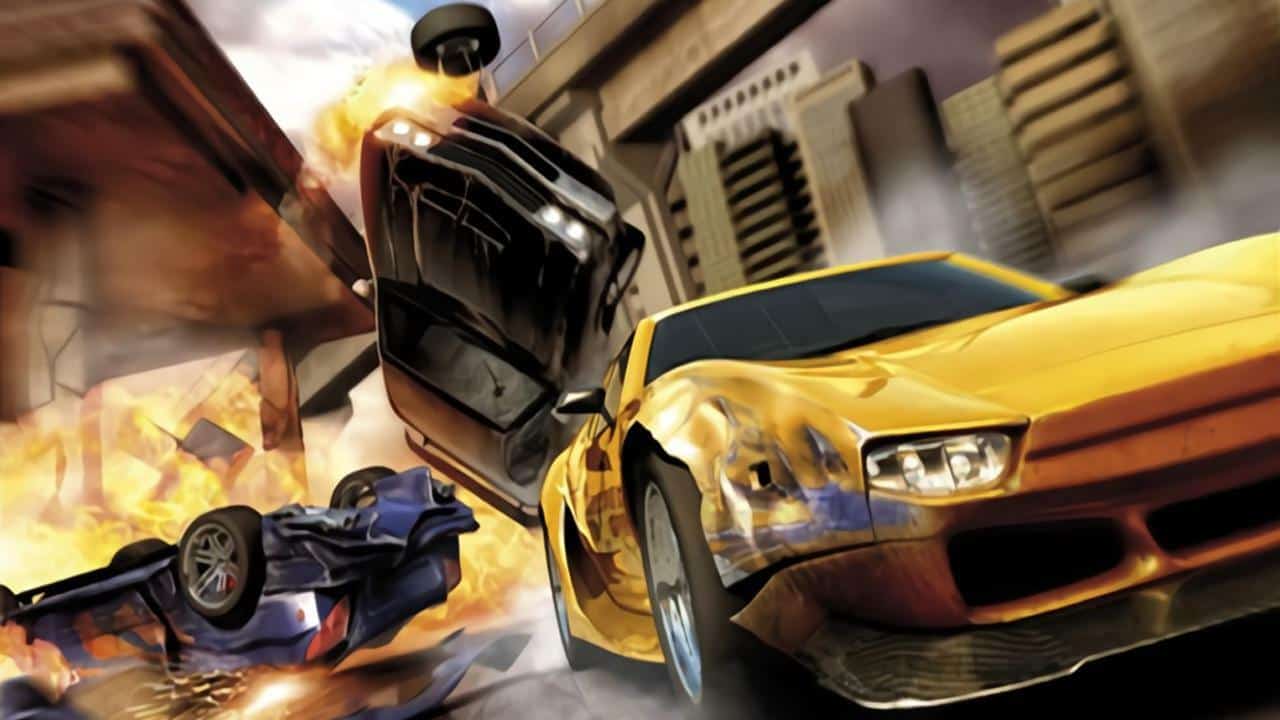You can trust VideoGamer. Our team of gaming experts spend hours testing and reviewing the latest games, to ensure you're reading the most comprehensive guide possible. Rest assured, all imagery and advice is unique and original. Check out how we test and review games here
There’s no genre of game more divided and sub-divided than the racer. With everything from real-driving sims to combat-car games and getaway titles, there’s little original left to do to stand out on shelves. Innovation is even more difficult in a genre essentially focussed on something as basic as guiding a solid block around a course. Quite simply, they are running out of worthwhile new additions to the humble driving game.
Bugbear, the Finnish developers of Flatout: Ultimate Carnage, seem to be well aware of this and, instead of concerning themselves with unnecessary novelty, have focussed on a ‘greatest hits’ approach to game design. But rather than just taking the best elements from across the genre and mimicking them, Flatout: Ultimate Carnage has also concentrated on what is missing from so many great driving titles. Taking a look at what this game is not is perhaps the easiest way to understand what it is.
Though this ‘hybrid-racer’ certainly draws most inspiration from the arcade-style driving games with outrageous stunts and explosive action, it is no Excite Truck. You can’t simply land at the wrong angle on a near vertical cliff face and carry on as if you’re taking driving lessons in a secluded car park. When you clip things, you know it, as your car is thrown violently through the air with little chance of driving away. The result of this is that when you play you have to drive with a little more control and skill than you would in your average Hollywood-handling title.
Yet Ultimate Carnage is no Gran Turismo or Enthusia Racing either; though both have their influences, in Flatout: Ultimate Carnage there is no need for the reserve and patience demanded by the driving simulators. You might have to work the racing line a little more thoroughly than in Grand Theft Auto but, as ever, the emphasis here is on destruction and carnage. As you tear up the tarmac you are rewarded for airtime, smashing into rival cars and, most commonly, ploughing through everything in sight, from street furniture to outbuildings and shop fronts.
It would be easy here to make comparisons to Full Auto, and while there are similarities, the lack of artillery and the more grounded handling physics of Flatout’s first outing on a next-generation machine make for slightly less overwhelming chaos than that provided by SEGA’s wrecking ball racer. Burnout also comes to mind, although Ultimate Carnage is a very different animal.
If there’s one fair comparison to be made, it’s with Destruction Derby, the PSone hit that wowed gamers near the launch of Sony’s debut console. To call Ultimate Carnage a next-gen Destruction Derby is not to belittle Bugbear’s fantastic new racer. If you think of how much Call of Duty 3 has expanded on the FPS template established on the PSone by the earliest Medal of Honor, you’ll have some idea of how much new you can expect from this 360 exclusive racer.
Putting aside for a moment the feel of the racing, which is thrilling, riotous and challenging, the single-player game is broken down into two main modes. The career mode, which should provide around 20 hours of playing time, is the more traditional of the two, offering a credit-based progress model that sees you earning cash, which can buy countless upgrades and entry into three classes of race, allowing you to pick your own progress route, mixing up rural, raceway and street-based high-octane pursuits.
The less orthodox single-player game mode is the more accessible Carnage mode, which presents the player with 36 challenges including the series’ infamous mini-games. These see you launching your driver from his bucket seat through loops of fire, down bowling alleys and into football goals, and though many will recoil at the mention of another release beefed up by mini-games, these really are a choice selection. The Carnage mode lets you flit between quick races and the mini-games, making for a challenge more suited to the casual gamer or post-pub session.
A host of online and multiplayer options exist, allowing the connected player to join both ranked and unranked online races, structure customised tournaments and dabble in the surprisingly competitive mini-game challenges. The latter can be played simultaneously online, using a ghost car system to allow multiple players to enjoy what would normally be a turn-based experience.
With a host of other game options, including classic deathmatch derbies, time trials and a new demolition mode that works like an FPS on wheels with your bonnet replacing the bullets, there is no doubting that Ultimate Carnage is packed with variation and primed for longevity. It might technically be an upgraded port of Flatout 2, but there’s still an awful lot of content.
Ultimate Carnage is already a stunning looking piece of software. In-game the detail is beautiful, from the reflections of the clouds on the roof of your car to the water and surface-deformation effects. It may shun complete photorealism in favour of more stylised excess, but it is still one of the finest looking driving games on the 360.
It’s also a game with some impressive numbers. With 25,000 polygons per car and over 8000 dynamic objects per track, it certainly makes for great screenshots, but the impressive physics, lighting and particle effects provide some incredible action that has to be played to be believed.
By deftly pursuing an original racing line that weaves through all the conventions of the driving genre, it would seem that Flatout: Ultimate Carnage has managed to combine the best elements of its rivals with a base originality that stems from its all encompassing approach to game design. As a brand Flatout may carry less weight than the likes of Gran Turismo, but based on everything seen of Ultimate Carnage so far, the series has every hope of joining the big names at the front of the starting grid.

/https://oimg.videogamer.com/images/6616/flatout_total_carnage_4.jpg)






